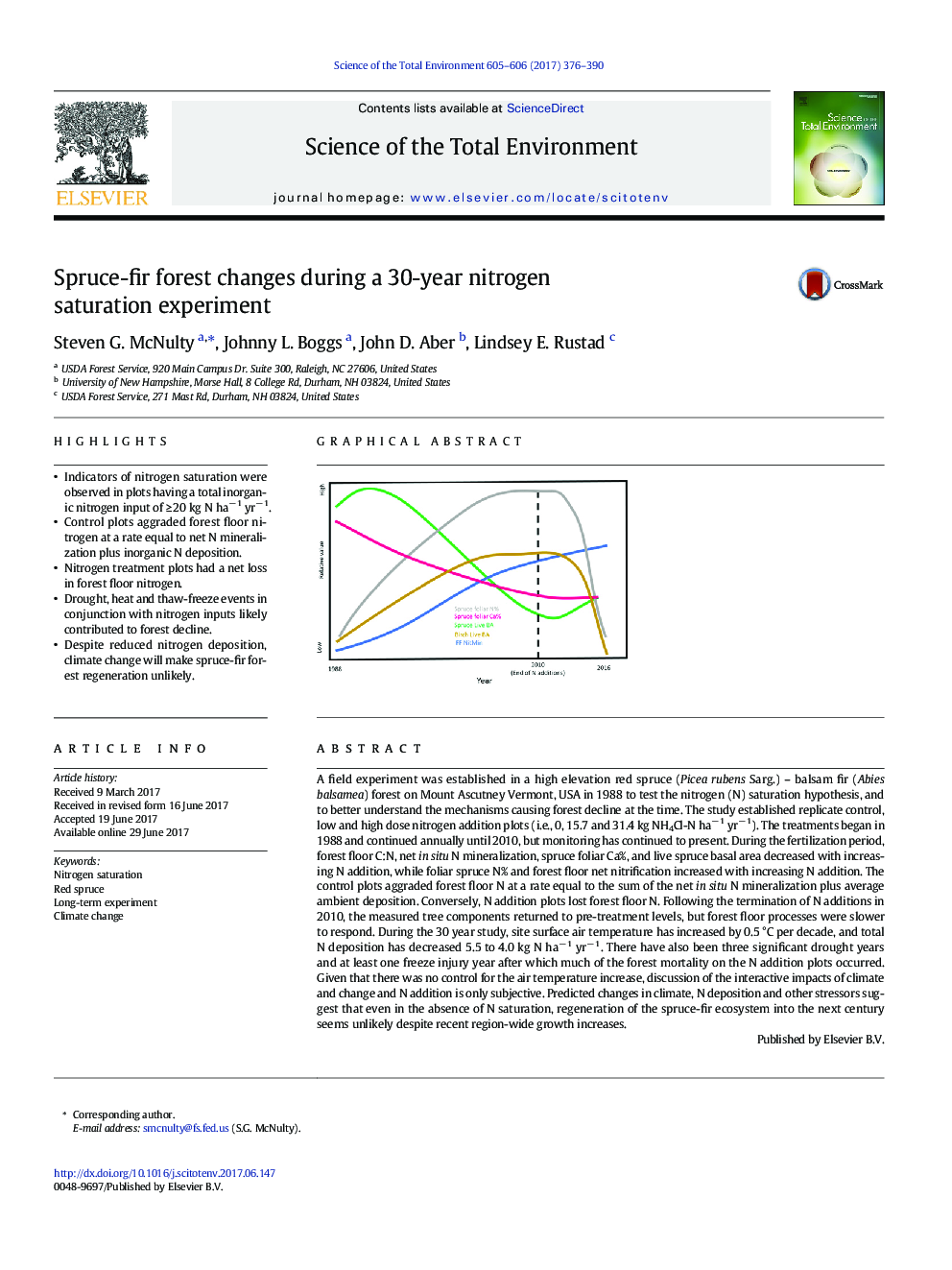| Article ID | Journal | Published Year | Pages | File Type |
|---|---|---|---|---|
| 5750606 | Science of The Total Environment | 2017 | 15 Pages |
â¢Indicators of nitrogen saturation were observed in plots having a total inorganic nitrogen input of â¥Â 20 kg N haâ 1 yrâ 1.â¢Control plots aggraded forest floor nitrogen at a rate equal to net N mineralization plus inorganic N deposition.â¢Nitrogen treatment plots had a net loss in forest floor nitrogen.â¢Drought, heat and thaw-freeze events in conjunction with nitrogen inputs likely contributed to forest decline.â¢Despite reduced nitrogen deposition, climate change will make spruce-fir forest regeneration unlikely.
A field experiment was established in a high elevation red spruce (Picea rubens Sarg.) - balsam fir (Abies balsamea) forest on Mount Ascutney Vermont, USA in 1988 to test the nitrogen (N) saturation hypothesis, and to better understand the mechanisms causing forest decline at the time. The study established replicate control, low and high dose nitrogen addition plots (i.e., 0, 15.7 and 31.4 kg NH4Cl-N haâ 1 yrâ 1). The treatments began in 1988 and continued annually until 2010, but monitoring has continued to present. During the fertilization period, forest floor C:N, net in situ N mineralization, spruce foliar Ca%, and live spruce basal area decreased with increasing N addition, while foliar spruce N% and forest floor net nitrification increased with increasing N addition. The control plots aggraded forest floor N at a rate equal to the sum of the net in situ N mineralization plus average ambient deposition. Conversely, N addition plots lost forest floor N. Following the termination of N additions in 2010, the measured tree components returned to pre-treatment levels, but forest floor processes were slower to respond. During the 30 year study, site surface air temperature has increased by 0.5 °C per decade, and total N deposition has decreased 5.5 to 4.0 kg N haâ 1 yrâ 1. There have also been three significant drought years and at least one freeze injury year after which much of the forest mortality on the N addition plots occurred. Given that there was no control for the air temperature increase, discussion of the interactive impacts of climate and change and N addition is only subjective. Predicted changes in climate, N deposition and other stressors suggest that even in the absence of N saturation, regeneration of the spruce-fir ecosystem into the next century seems unlikely despite recent region-wide growth increases.
Graphical abstractDownload high-res image (134KB)Download full-size image
